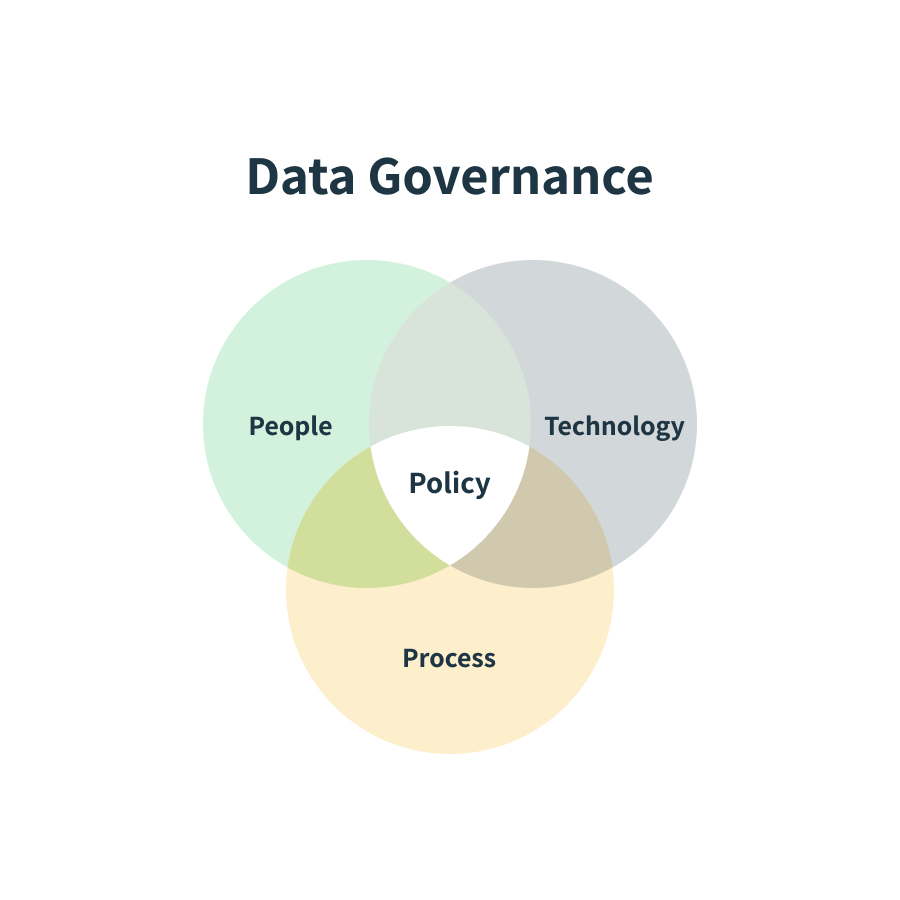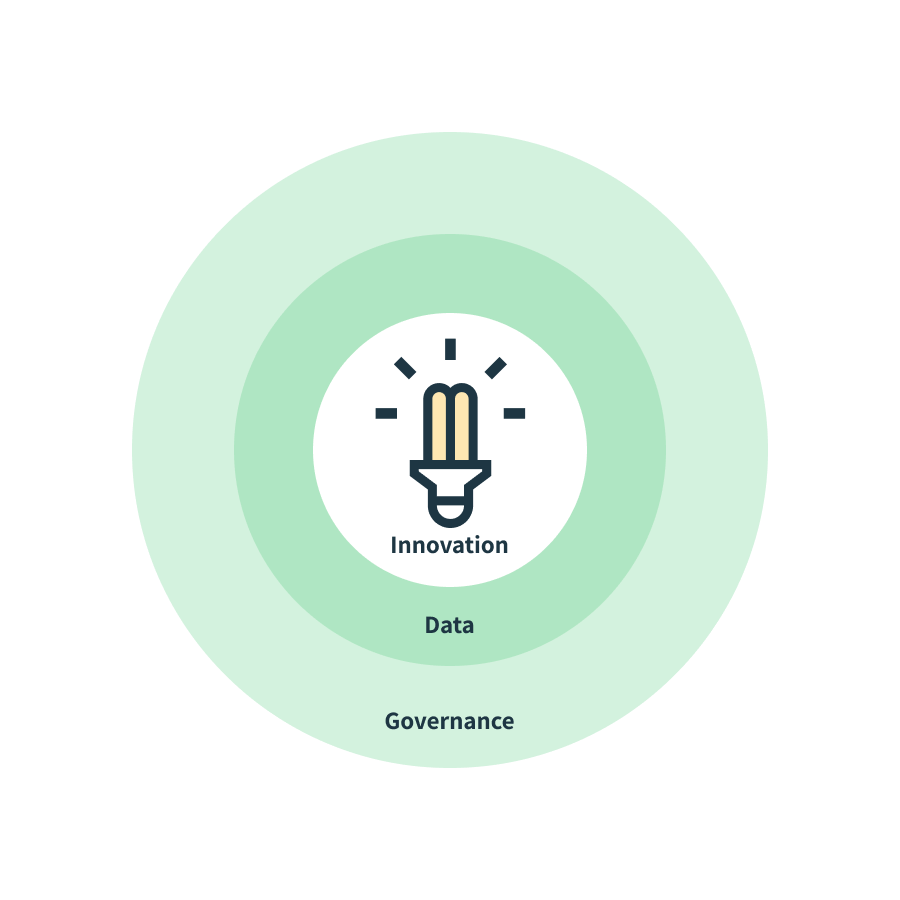
What is Data Governance - and why is it important?
In short, Data Governance is the discipline of keeping your data under control.
Do our data meet the quality standards we’ve defined? Have we assigned responsibility for the processes related to acquiring, enriching, organizing, and publishing data? Are those responsibilities placed with the right people—and do they have the tools they need to succeed?
Data Governance involves both an organizational and a technological component.
Data Governance matters because the success of your digital transformation depends on it. The quality of the data that underpin your products and services directly impacts the user experience and provides the decision-making support your customers rely on.
- People
- Technology
- Process
- Policy
The most ambitious companies don’t leave data work to chance (or random colleagues), but deliberately establish what is known as a data organization.
This organization is created with the purpose of turning raw data into a value-creating asset.
This can be achieved by:
- Ensuring the right access to data
- Enabling efficient data enrichment
- Providing easy access to data (e.g. via well-designed APIs)
- And much, much more...
The size and structure of a data organization will always depend on the company’s size, the overall volume of data (e.g. product data), and the specific technical setup within the company.
For most companies, an effective data organization consists of the following roles:
- Data owner
- Analytical data expert
- Data supporter
- Data architect
- Data partner
- Channel owner
- Content creators
Want to talk data?
If you’re interested in hearing our ideas on how data can help your business execute, grow, and scale, we’re ready for a no-obligation conversation.

No scaling without effective data management processes
Most companies aim to support efficient operations that can form the foundation for further scaling of the business and its deliveries.
By ensuring that data related to products and services is accurate and accessible, companies can provide their employees and business partners with the optimal conditions to succeed in their tasks.
Accurate data can be ensured through simple and fail-safe processes, while accessibility is supported by proper data ownership across systems.
Through the development of strong data governance and master data strategies, we help companies pursue new opportunities, enter new markets, and scale their operations—without compromising data quality or security.

Good Data Governance creates happy employees
Whether you identify as a retail, manufacturing, or trading company, your employees' well-being depends on having the right conditions to succeed in the tasks they are responsible for.
Undocumented processes, lack of requirements and quality standards, and unclear responsibilities can lead to poor collaboration, inefficiency, and missed opportunities - all of which negatively affect employee motivation.
Good data governance is therefore not merely a growth-oriented tool, but also contributes to the environment and framework you provide for your employees.
By ensuring clearly defined processes and standardizing how your systems are used, you give your employees the best possible conditions to contribute to your shared mission.

How Data Governance supports innovation in your business
Innovation is the commercialization of good ideas. For most companies, innovation is therefore a key driver of growth and scalability.
In a digital age, good data supports many of the development and decision-making processes associated with innovation. Looking at a typical manufacturing company, data about approvals, specifications, materials, etc. is essential in the product development process that precedes the launch of new products to the market.
Good data governance ensures that the product organization has control over the process itself and that the technical measures supporting the progress of the process are in place. With a PIM-system, we can support the process by ensuring easy access to data about the product’s journey from idea to finished product.
This helps you get new ideas into the hands of your customers faster and eliminate inefficient processes that hinder innovation.
